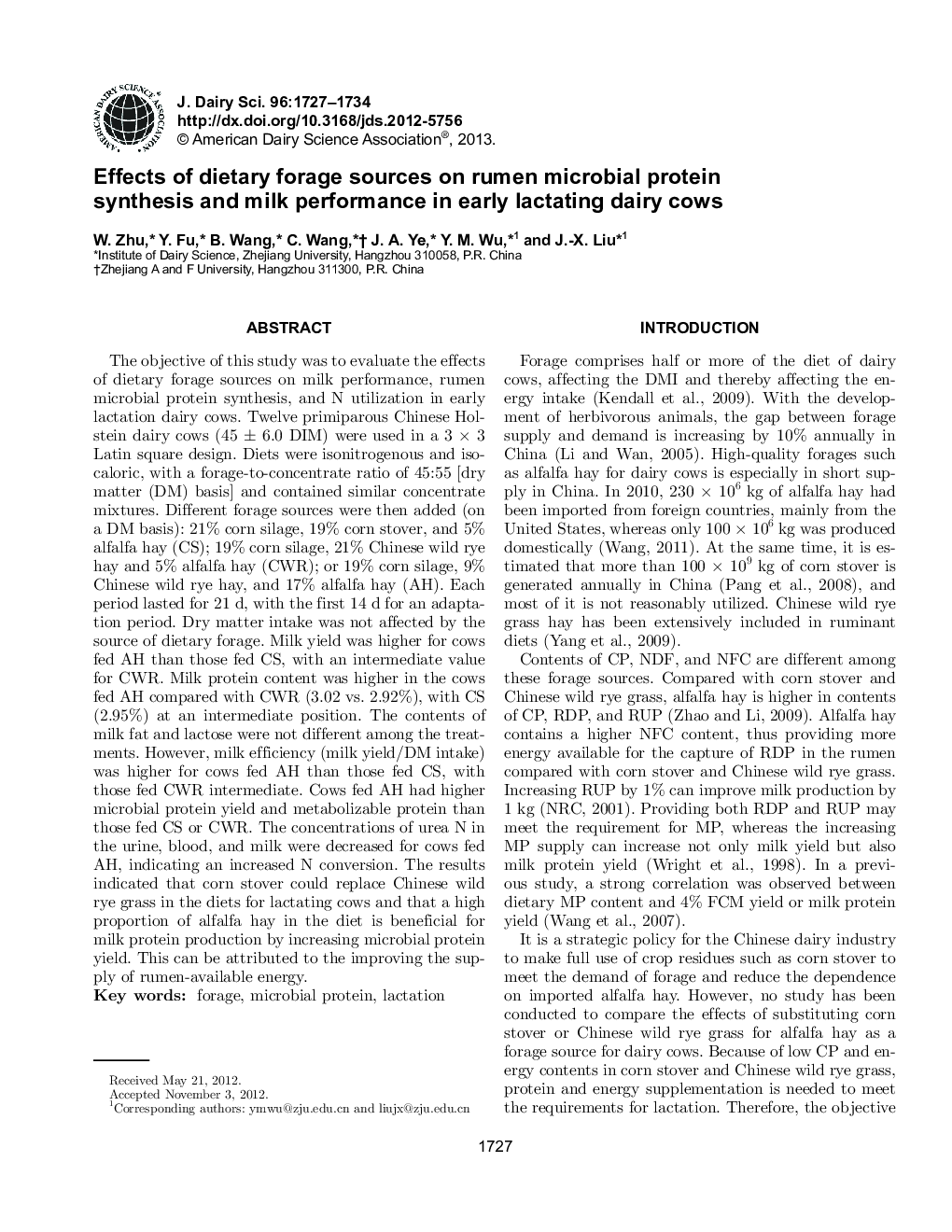| Article ID | Journal | Published Year | Pages | File Type |
|---|---|---|---|---|
| 10976204 | Journal of Dairy Science | 2013 | 8 Pages |
Abstract
The objective of this study was to evaluate the effects of dietary forage sources on milk performance, rumen microbial protein synthesis, and N utilization in early lactation dairy cows. Twelve primiparous Chinese Holstein dairy cows (45 ± 6.0 DIM) were used in a 3 Ã 3 Latin square design. Diets were isonitrogenous and isocaloric, with a forage-to-concentrate ratio of 45:55 [dry matter (DM) basis] and contained similar concentrate mixtures. Different forage sources were then added (on a DM basis): 21% corn silage, 19% corn stover, and 5% alfalfa hay (CS); 19% corn silage, 21% Chinese wild rye hay and 5% alfalfa hay (CWR); or 19% corn silage, 9% Chinese wild rye hay, and 17% alfalfa hay (AH). Each period lasted for 21 d, with the first 14 d for an adaptation period. Dry matter intake was not affected by the source of dietary forage. Milk yield was higher for cows fed AH than those fed CS, with an intermediate value for CWR. Milk protein content was higher in the cows fed AH compared with CWR (3.02 vs. 2.92%), with CS (2.95%) at an intermediate position. The contents of milk fat and lactose were not different among the treatments. However, milk efficiency (milk yield/DM intake) was higher for cows fed AH than those fed CS, with those fed CWR intermediate. Cows fed AH had higher microbial protein yield and metabolizable protein than those fed CS or CWR. The concentrations of urea N in the urine, blood, and milk were decreased for cows fed AH, indicating an increased N conversion. The results indicated that corn stover could replace Chinese wild rye grass in the diets for lactating cows and that a high proportion of alfalfa hay in the diet is beneficial for milk protein production by increasing microbial protein yield. This can be attributed to the improving the supply of rumen-available energy.
Keywords
Related Topics
Life Sciences
Agricultural and Biological Sciences
Animal Science and Zoology
Authors
W. Zhu, Y. Fu, B. Wang, C. Wang, J.A. Ye, Y.M. Wu, J.-X. Liu,
